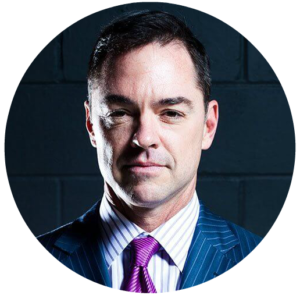Child sexual abuse is a broad umbrella term that includes any sexual interaction between a child and an adult, or another child. Child sexual abuse can refer to touching and non-touching behaviors. Movies, books, magazines, and society in general often depict child sexual abuse as male perpetrators victimizing young girls, particularly in poorer communities. This is a common misconception; males and females can be abusers and victims alike, and child sexual abuse also happens to those from all economic backgrounds in all types of communities.
If you are an adult survivor of child sexual abuse, a parent, or a guardian, you can take action against those who caused you or your child harm. Child sexual abuse is illegal, and abusers can be charged with a crime. Although criminal justice remains an important step towards holding abusers accountable, it’s only one aspect of accountability. You can also file a civil lawsuit an abuser for damages related to losses and injuries incurred from the abuse.
This guide provides a deeper look at child sexual abuse, including information about the abuser, characteristics of child sexual abuse, risk factors which can make a child more likely to be abused, warning signs of child sexual abuse, reporting requirements under California law, and effects of child sexual abuse. From the sexual abuse lawyers at Gomez Trial Attorneys.
Child Sexual Abuse Defined
As mentioned above, child sexual abuse refers to a broad range of sexual activity with a child. Different organizations and entities have slightly different definitions of child sexual abuse, but most are the same for all practical and legal purposes. Much of the different language impacts the criminal aspect of child sexual abuse, specifically in what cases law enforcement can monitor an alleged abuser and requirements for reporting suspected abuse. One of the most broadly referenced definitions of child sexual abuse comes from The Centers for Disease Control and Prevention (CDC).
The CDC refers to child sexual abuse as “the involvement of a child in sexual activity that violates the laws or social taboos of society,” and requires that the abuse survivors meet one of the following criteria:
- The child does not fully comprehend the sexual activity.
- The child does not consent or cannot give informed consent.
- The child is not developmentally prepared for and cannot give consent.
In California, the age of consent is 18 years old. Any sexual activity with a child younger than 18 falls under the umbrella of child abuse by the CDC’s definition, and under the vast majority of other definitions of child sexual abuse. The presence of touching is another important aspect of childhood sexual abuse. You might assume that sexual abuse means a perpetrator must fondle, molest, or penetrate a child. Yet, this is not the case.
Some examples of child sexual abuse that do not include touching are:
- Exposing private areas to a minor
- Masturbation in front of a minor
- Forcing a minor to masturbate
- Sexually explicit phone calls, texts, or internet communication
- Sharing pornographic images or movies with a minor
Who Are the Abusers?
The exact number varies among sources, but research shows that at least 90 percent of child sexual abuse is perpetrated by someone the child or the child’s family knows. Abusers can have many different types of relationships with the child, such as:
- A family member
- A teacher
- A coach
- A caretaker or daycare provider
- A parent of a friend
- Clergy
When child sexual abuse occurs, perpetrators often use their trusted status and/or position of power over a child to coerce or intimidate a child and abuse them. More specific dynamics of child sexual abuse are discussed below. You might also notice specific behaviors and characteristics in someone who is an abuser.
They include:
- Lack of adult friends
- Prefers to interact with children and teens
- Regularly creates situations for alone-time with children, such as taking the child for a ride in the care, arranging a special trip, and regularly offering childcare
- Crosses children’s physical boundaries when they don’t want to be hugged, kissed, or tickled
- Doesn’t respect a child’s privacy
- Gives a child or teen money and gifts without reason
Dynamics of Child Sexual Abuse
The World Health Organization (WHO) has taken an active role in giving health care workers the tools they need to respond to sexual violence. Chapter 7 of their publication, Guidelines for Medico-legal Care for Victims of Sexual Violence, addresses child sexual abuse. Child sexual abuse has very different dynamics than adult sexual abuse.
According to the WHO, the dynamics of child sexual abuse include:
- Perpetrators of child sexual abuse rarely use physical force or violence. Instead, the abuser attempts to manipulate the child and coerce the child into hiding the abuse and keeping the secret.
- Child sexual abuse typically is not a one-time event; abuse often occurs repeatedly over weeks, months, or years.
- Perpetrators usually spend time grooming their victims and gradually sexualizing their relationship with the child over time.
- Incest and sexual abuse within the family account for about one-third of all child sexual abuse cases.
- Pedophiles prefer sexual contact with children and have honed skills allowing them to inject themselves into the lives of children they wish to target. Yet, not all abusers are pedophiles; most are situational abusers, according to The Enough Abuse Campaign.
The Enough Abuse Campaign focuses on preventing child sexual abuse in several states throughout the nation. They report that about 96 percent of abusers are male, but some studies also show that women might be perpetrators in 20 to 30 percent of child sexual abuse cases. Many also assume that abusers are mentally ill. In fact, fewer than 5 percent of abusers have an identifiable mental illness.
Children at Risk for Child Sexual Abuse
Children from all walks of life might be victims of child sexual abuse, but some situations and factors increase the risk of abuse.
- Females are more likely to experience childhood sexual abuse than males. Statistics vary, but the most commonly referenced statistic from the CDC and other organizations is that one out of four females will experience child sexual abuse. The CDC reports one out of 13 males will experience child sexual abuse, but several other sources claim one out of six males suffer child sexual abuse.
- Unaccompanied children, whether left at home or left to go to the store, play, or do anything without a friend or adult, are more likely to suffer child sexual abuse.
- Children who are adopted, children in foster care, and stepchildren are more likely to experience child sexual abuse.
- Children who have a physical or mental disability are more easily coerced and manipulated, putting them at higher risk for victimization.
- Those with a history of past abuse are more likely to suffer abuse again.
- Although not all victims come from poor families, children who live in poverty are more likely to suffer sexual abuse or exploitation than others.
- Children from single parent homes are more likely to suffer abuse, often correlated with the fact that they are left alone more often because of a working parent.
- Children whose parents struggle with mental illness, alcohol, or drugs have a high risk of child sexual abuse because they are often left alone.
Warning Signs of Child Sexual Abuse
Guilt can often accompany parents and guardians of child sexual abuse victims because they didn’t notice the signs of abuse. Child sexual abuse can be difficult to notice, especially if the abuser is someone you and your child know and trust. If you suspect abuse, you can watch for the following physical and behavioral signs:
6 Physical Signs of Child Sexual Abuse
Abusers often try to avoid causing physical signs of abuse to help hide the abuse and make it easier to continue. Yet, some physical signs might exist. According to The Rape, Abuse & Incest National Network (RAINN), things you can keep an eye out for include:
- Unexplained injuries in the genital area such as bleeding, swelling, and bruises
- Ongoing or frequent urinary tract infections or yeast infections, including penile or vaginal discharge
- Pain, itching, or burning in the genital area
- Sexually transmitted diseases (STDs)
- Struggles with sitting or walking
- Bloody, torn, or stained underwear or pants
17 Behavioral Signs of Child Sexual Abuse
The trauma of child sexual abuse can cause victims to act out and change behaviors in certain ways. These behaviors don’t always mean a child has suffered sexual abuse, but if you recognize any of the following behaviors in the child you love, the behaviors should give you pause to talk to the child about abuse.
Common behavioral signs in child sexual abuse victims include:
- Having difficulty in school, such as a drop in performance or repeated absences, or struggling to meet developmental milestones
- Social struggles at home and school
- Behaving in an exceptionally clingy way
- Abnormal irritability in your young child
- Trouble falling asleep or waking up frequently because of nightmares
- Bed-wetting far beyond the usual age
- Refusal to eat, overeating, binge-eating
- Depression and/or anxiety or other signs of post-traumatic stress disorder
- Onset of one or more phobias and fear of physical contact
- Low self-esteem
- Changes in hygiene behavior such as the refusal to bathe or excessively cleaning one’s body
- Age inappropriate sexual knowledge and behavior
- Talking about suicide, especially common in teen victims of sexual abuse
- Attempts at suicide or other types of self-harm
- Demonstration of extreme concern for siblings, often evidenced by the victim assuming a caretaker role for their brothers and sisters
- Regression in behavior, such as thumb sucking
- Attempts to run away from home or school
Reporting Requirements for Child Sexual Abuse
California has mandatory reporting laws for teachers, school personnel, and others who are frequently around children. Yet, community members also help keep children safe from all types of abuse. If you suspect a child is suffering from sexual abuse, file a report with a local law enforcment agency or Child Protective Services as soon as possible. Parents and guardians can also file a complaint against those who they believe might have harmed their child.
Each county in California has a separate phone number for emergency response to child abuse, you can find the number for the county you live in here. Those who are mandated reporters must report all known or suspected cases of child abuse. Each school district has different policies, but California law requires mandated reporters to file a report with the local police or sheriff, county probation department when applicable, or a county welfare or child protective services department.
Taking Legal Action Against Your Abuser or Your Child’s Abuser
Child sexual abuse leaves emotional impacts on a survivor long after the abuse stops, and well into adulthood for many. Taking action against the abuser won’t undo the harm, but it can help provide compensation that a survivor can use for treatment and recovery from the trauma. Those who suffer child sexual abuse often need years of behavioral therapy to work through the trauma they experienced.

In fact, the CDC reports the following alarming statistics:
- Female survivors of child sexual abuse are up to 13 times more likely to suffer sexual victimization as an adult.
- Child sexual abuse survivors have twice the risk for domestic violence in their relationships as an adult.
- Men who experienced child sexual abuse are six times more likely to commit suicide as an adult, and women with a history of child sexual abuse are nine times more likely to commit suicide.
If you take action as a parent or guardian, not only are you helping your child confront the abuser, but you are preventing other children from potentially falling victim to the same abuser.
If you are an adult survivor of child sexual abuse, it might not be too late to take action. California grants extra time for survivors to file a lawsuit. Starting on January 1, 2020, victims of childhood sexual abuse will have a 3 year “window” to bring a lawsuit, no matter when the abuse occurred. Starting on January 1, 2023, survivors of child sexual abuse will be required to bring a lawsuit by the time they reach age 40, or within five years from when an adult discovers or should have reasonably discovered their abuse.
A compassionate and skilled attorney can help you through the process.







